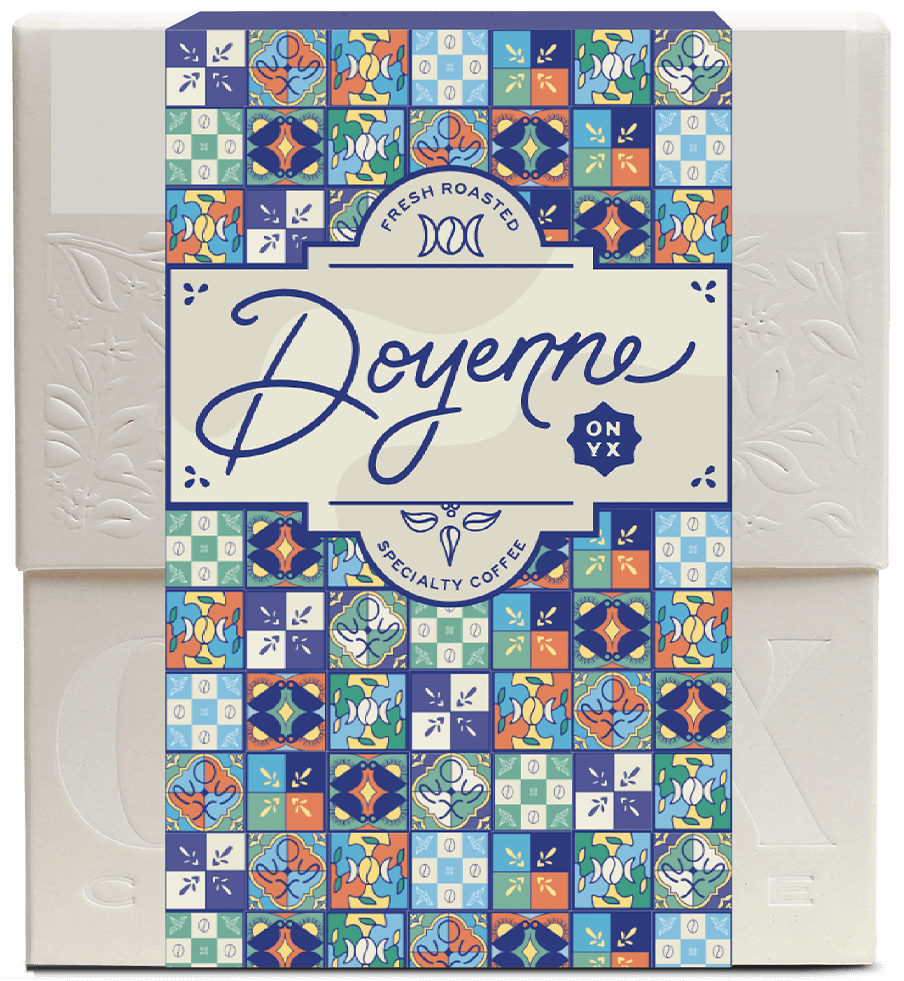Story
Single-producer lots in Ethiopia represent a special and relatively recent development in the country's coffee industry. Traditionally, Ethiopian coffee has been sold through a complex system of cooperatives, auction houses, and commodity traders, making it challenging to trace coffee back to individual farmers. However, in recent years, efforts have been made to establish more direct relationships and highlight the unique qualities of coffee produced by individual farmers. Within the pilot season of the Doyenne subscription, it has been our goal to represent all the variances across specialty coffee, and we are lucky to have this natural processed lot to share, produced by Bogalech Dukkale in the Guji zone.
Sookoo Coffee and Bogalech Dukkale, by Osito Coffee
We have been working with Sookoo's founder, Ture Waji, since our earliest days sourcing coffee in Ethiopia. Ture and his brother, Assefa, founded Sookoo (legally, Dambi Uddo Agro Industry) in late 2018/early 2019. In that same harvest, Osito delivered to Dambi Uddo their very first registered purchase contract.
Ever considering ways to pursue existing relationships in deeper/more meaningful ways, two years ago we asked Ture to start considering farmers that were delivering cherry to his station in large enough volumes that we may be able to keep their cherry separate and, thus, have single farmer lots, dried by the Sookoo team. The goal was to indentify producers that would have historically delivered to Shoondhisa or Bookkisa, the two community lots Osito considers foundational to our work with Sookoo.
This year, we were fortunate enough to purchase two such lots from Sookoo, including this wonderful coffee from Bogalech Dukkale. Even during what ended up being an incredibly challenging year for quality in Southern Ethiopia, Bogalech and Ture were able to produce something very special. Bogalech Dukkale is a 45 year old mother of six. She and her husband oversee a four hectare farm that Bogalech inherited from her parents, who were also coffee producers.
NATURALLY PROCESSED COFFEE
Natural coffees are beautiful… Okay, natural coffees are beautiful when done properly, but can be equally terrible when things go wrong. Natural processing, or dry processing, refers to the act of drying and fermenting coffee inside the cherry. Long before the age of portafilter tattoos and dual-boiler home espresso machines, coffee was picked and dried this way out of convenience. It is, to this day, still the most convenient and economically friendly way to process coffee cherries. (It’s estimated that dry-processing can use up to 90% less water than the washing process.) So why isn’t all coffee processed this way? Well, as coffee made its way across the world, it was commoditized and standardized, just like all other products spread by colonialism, but that’s a whole other story... Adding to the boom of washed processing, the natural process method can be tricky to get right, due to the delicate nature of fermentation and drying. What does all this have to do with the final cup? Well, when you leave the skin and fruit of the coffee cherry on the seed throughout fermentation and drying, that fruit begins to break down, imparting esters that influence delicate florals and big fruit notes into the seed that survive the roasting process. If it’s rushed or handled incorrectly, this fruit rot can lend off-flavors to the coffee, making the final cup “dirty” or “fermenty.”
How is this done? It starts at harvest, with the selective harvesting of ripe coffee cherries. Only the fully mature cherries are picked, as they have the highest sugar content and flavor potential. The harvested cherries are then sorted to remove any damaged or under ripe cherries. This ensures that only the best quality cherries are used in the primary fermentation. After sorting, the cherries are spread out in thin layers on large drying beds or patios to dry naturally under the sun. (or sometimes under shade) They are periodically raked and turned to ensure even drying. This step can take several weeks depending on weather conditions. As the cherries dry, they undergo a natural fermentation process. Enzymes present in the fruit interact with the sugars and other compounds, causing chemical reactions that impact the flavor profile of the coffee. This fermentation adds complexity and fruity flavors to the final cup. During the drying/ fermentation process, the cherries must be protected from rain, humidity, pests, and mold. Farmers often cover the cherries with tarps during the night or when there's a risk of adverse weather. The coffee cherries are dried until they reach an optimal moisture content of around 11-12%. At this point, the cherries have shrunk, and the outer skin and fruit can be easily removed to reveal the green coffee seed inside, which is ready for roasting after a short boat ride. Basically, that single cherry begins to slowly decay, and controlling that delicate action through advanced technique and metrics allow us, lucky folks, to drink wonderfully floral and fruity coffees.
